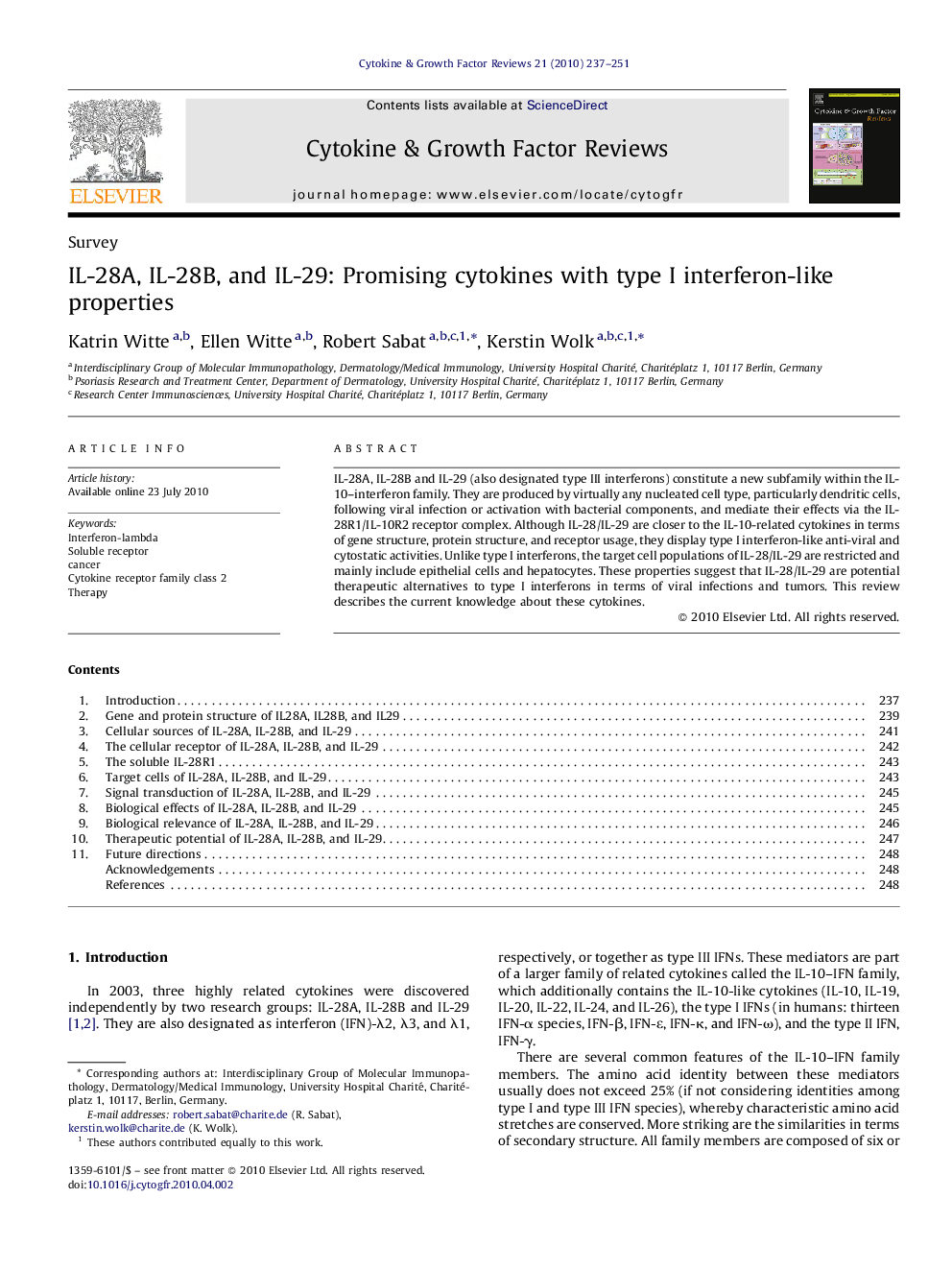| Article ID | Journal | Published Year | Pages | File Type |
|---|---|---|---|---|
| 2170671 | Cytokine & Growth Factor Reviews | 2010 | 15 Pages |
Abstract
IL-28A, IL-28B and IL-29 (also designated type III interferons) constitute a new subfamily within the IL-10-interferon family. They are produced by virtually any nucleated cell type, particularly dendritic cells, following viral infection or activation with bacterial components, and mediate their effects via the IL-28R1/IL-10R2 receptor complex. Although IL-28/IL-29 are closer to the IL-10-related cytokines in terms of gene structure, protein structure, and receptor usage, they display type I interferon-like anti-viral and cytostatic activities. Unlike type I interferons, the target cell populations of IL-28/IL-29 are restricted and mainly include epithelial cells and hepatocytes. These properties suggest that IL-28/IL-29 are potential therapeutic alternatives to type I interferons in terms of viral infections and tumors. This review describes the current knowledge about these cytokines.
Related Topics
Life Sciences
Biochemistry, Genetics and Molecular Biology
Cell Biology
Authors
Katrin Witte, Ellen Witte, Robert Sabat, Kerstin Wolk,
